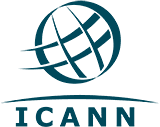- Website:
- Blogs: Publishing relevant articles and news.
- Product/Service Pages: Detailed information about what you offer.
- SEO: Search engine optimization to improve organic visibility.
- Social Media:
- Facebook, Instagram, Twitter, LinkedIn: Key platforms for sharing content and connecting with your audience.
- YouTube: Ideal for video distribution.
- TikTok: Increasingly popular for short and viral video content.
- Email Marketing:
- Newsletters: Sending regular updates to a subscriber list.
- Email Campaigns: Promotions, product launches, important news.
- Online Advertising:
- Google Ads: Search and display advertising.
- Social Media Ads: Facebook Ads, Instagram Ads, LinkedIn Ads, etc.
- Native Advertising: Sponsored content on platforms like Outbrain or Taboola.
- Marketplaces and E-commerce Platforms:
- Amazon, eBay: For physical products.
- Etsy, Shopify: Specialized online stores.
- Collaborations and Influencer Marketing:
- Influencers: Working with influential people to promote your products or services.
- Brand Collaborations: Partnering with other brands for joint campaigns.
- Online Forums and Communities:
- Reddit, Quora: Participating in relevant discussions and sharing your expertise.
- Facebook Groups, Discord: Specific communities where you can interact directly with your audience.
- Podcasts and Webinars:
- Podcasts: Creating or sponsoring podcasts related to your industry.
- Webinars: Online seminars to educate your audience and generate leads.
- SEO and Organic Content:
- SEO-optimized Content: Improving search engine rankings.
- Content Marketing: Creating valuable and relevant content to attract and retain your audience.
- Mobile Apps:
- Apps: If you have an app, using it as a distribution channel for notifications and exclusive content.
Each of these channels has its own advantages and can be used in combination to create an effective and cohesive distribution strategy.














